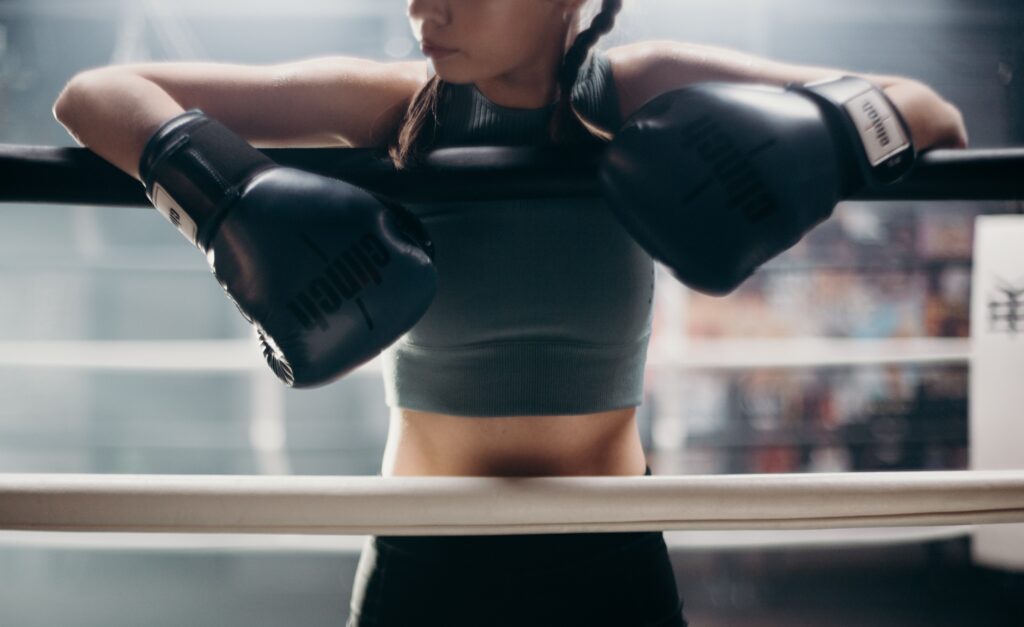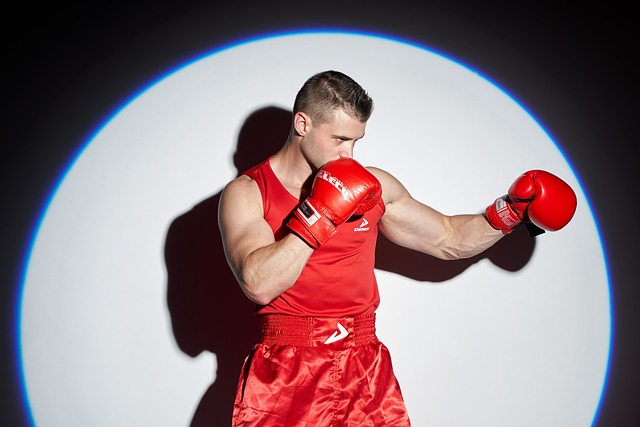Are you ready to pack a punch into your fitness routine? If you’ve ever wondered whether boxing can truly help you bulk up, you’re not alone.
Many fitness enthusiasts are curious about the potential for muscle growth that comes with this high-intensity sport. In this article, we’re diving deep into the question:

Does boxing increase size? Let’s explore the science behind this popular fitness trend.
Does boxing increase size?
Yes, boxing training can lead to an increase in muscle size due to the combination of resistance training and cardiovascular exercise.
The repetitive use of punches engages various muscle groups, promoting muscle growth. Additionally, strength and conditioning exercises like bag work, pad drills, and bodyweight exercises contribute to muscle hypertrophy.
Proper nutrition, rest, and recovery are essential for optimal growth. However, genetic factors and individual responses vary.
While boxing can contribute to muscle development, a specific focus on weightlifting and nutrition might be more effective for substantial muscle size gains. Always consult a fitness professional for personalized guidance.
Here check out how to make boxing glove drawing.
Will Your Arms Get Bigger or Smaller With Boxing?
Large Arms: Mainly Fat
Boxing can influence arm size through muscle development and fat loss.
While excessive fat in the arms can make them appear larger, consistent boxing training that includes strength exercises can lead to muscle growth, making the arms more defined and proportionate.
Boxing also aids in overall fat loss, potentially reducing excess fat in the arms.
Balancing strength training, cardiovascular workouts, and proper nutrition can help achieve leaner and more muscular arms over time.
Large Arms: Mainly Muscle
Boxing can have a positive impact on arm size even for individuals with naturally skinny arms. Regular boxing training involves repetitive arm movements and resistance from punching bags and opponents.
This stress can stimulate muscle growth and increase arm size. While genetics play a role, consistent training, proper nutrition, and recovery can lead to more muscular and defined arms.
The combination of muscle development and reduced body fat can help achieve a more balanced and proportionate appearance.
Skinny Arms: Mainly Bone
Boxing can have a positive impact on arm size even for individuals with naturally skinny arms. Regular boxing training involves repetitive arm movements and resistance from punching bags and opponents.
This stress can stimulate muscle growth and increase arm size. While genetics play a role, consistent training, proper nutrition, and recovery can lead to more muscular and defined arms.
The combination of muscle development and reduced body fat can help achieve a more balanced and proportionate appearance.
What Muscles Are Worked When Boxing?
Here take a look at soe muscles which might increse size while boxing.
Calves
During boxing, calf muscles are engaged significantly. They help with footwork, pivoting, and generating power while pushing off the ground for punches and movement.
This continuous activation builds calf strength and endurance over time, enhancing stability and agility in the ring.
Hips And Legs
Boxing heavily involves the hips and legs. The legs provide the base for movement, generating power for punches and defensive maneuvers.
Here how much padding is in boxing glove?

Hip muscles, like the glutes and hip flexors, are crucial for maintaining balance, transferring weight, and delivering forceful punches.
Strong hips and legs enhance overall boxing performance and agility.
Core
Boxing engages the back muscles extensively. While throwing punches, the latissimus dorsi and trapezius muscles stabilize the shoulders and generate force.
Defensive actions involve the rhomboids and rear deltoids. A strong back supports posture, balance, and power, contributing to effective boxing techniques and overall upper body strength.
Back
Boxing engages the back muscles extensively. While throwing punches, the latissimus dorsi and trapezius muscles stabilize the shoulders and generate force.
Defensive actions involve the rhomboids and rear deltoids. A strong back supports posture, balance, and power, contributing to effective boxing techniques and overall upper body strength.
Shoulders
Boxing significantly targets the shoulders. The deltoid muscles are activated during punches, especially the anterior deltoids in jabs and lateral deltoids in hooks.
Shoulder stability is crucial for accurate and forceful punches, while defensive movements engage the shoulders to protect against incoming strikes.
Consistent boxing training strengthens these muscles, enhancing shoulder endurance and strength.

Arms
Boxing heavily engages the arms. The biceps and triceps muscles power punches, while forearm muscles control grip on the gloves. Repetitive punching motions stimulate muscle growth in these areas.
Well-developed arm muscles are essential for generating speed and force, making them crucial for effective and powerful boxing techniques.
Let’s see some related faq’s
Here why does boxing glove weight matter?
Related faq’s
Does Boxing Build Muscle?
Yes, boxing can build muscle. The combination of resistance from punching, strength training exercises, and cardiovascular conditioning stimulates muscle growth.
However, compared to traditional weightlifting, the muscle-building effects might be more modest. Balanced nutrition and recovery are vital for optimal muscle development in boxing training.
Does Boxing Build Back Muscle?
Yes, boxing engages and builds back muscles. Punching and defensive movements activate muscles like the latissimus dorsi, trapezius, rhomboids, and rear deltoids.
These muscles stabilize the shoulders, generate power in punches, and support posture.
Consistent boxing training contributes to back muscle development and overall upper body strength.
Does Boxing Build Leg Muscle?
Yes, boxing helps build leg muscles. Footwork, pivoting, and generating power from the legs during punches engage muscles like quadriceps, hamstrings, and calves.
The repeated resistance from these movements stimulates muscle growth. Stronger leg muscles enhance stability, agility, and overall performance in boxing.
Does Boxing Build Arm Muscle?
Yes, boxing builds arm muscles. Punching involves the use of biceps and triceps, which contract during strikes, promoting muscle growth.
Additional strength exercises like bag work and pad drills further develop arm muscles. Over time, consistent boxing training can lead to increased arm muscle size and strength.
How Do Boxers Build Muscle Without Lifting Weights?
Boxers can build muscle without traditional weightlifting by focusing on bodyweight exercises like push-ups, pull-ups, and dips.
Boxing training itself, with its repetitive punches and defensive movements, acts as resistance training.
Incorporating plyometrics, resistance bands, and functional movements in their regimen helps boxers develop muscle strength and endurance while improving overall performance.
Do You Want Big Muscles As A Boxer?
As a boxer, the goal isn’t solely about having big muscles. While muscle strength is important for power and endurance, excessive muscle mass can compromise agility and speed.
Boxers aim for functional muscle development, focusing on strength, endurance, and speed, rather than just size, to maintain optimal performance in the ring.
What Does Boxing Do For Your Body?
Boxing offers a comprehensive workout that benefits the body in multiple ways. It enhances cardiovascular fitness, builds muscle strength, agility, and coordination.
It promotes fat loss, improves core stability, and enhances mental focus and discipline.
Boxing training provides a well-rounded approach to physical fitness and overall well-being.
Is Boxing Good For Muscle Growth?
Yes, boxing is beneficial for muscle growth. The combination of punching resistance, bodyweight exercises, and agility training stimulates muscle development.
While not as focused as traditional weightlifting, consistent boxing training can lead to increased muscle size and strength, particularly in the arms, shoulders, core, legs, and back.
Does boxing make you bigger?
Boxing can contribute to muscle growth, making certain muscle groups like arms, shoulders, and core more defined.
However, the extent of size increase varies due to factors like genetics, training intensity, and nutrition.
While boxing promotes muscle development, significant overall body size gains might require additional weightlifting and specific dietary approaches.
Does boxing affect bodybuilding?
Conclusion:
In conclusion, boxing can contribute to muscle growth and size increase, particularly in areas like arms, shoulders, core, and legs.
While not as focused on size gains as traditional weightlifting, boxing’s combination of resistance, bodyweight exercises, and cardiovascular training can lead to improved muscle definition and overall fitness.






